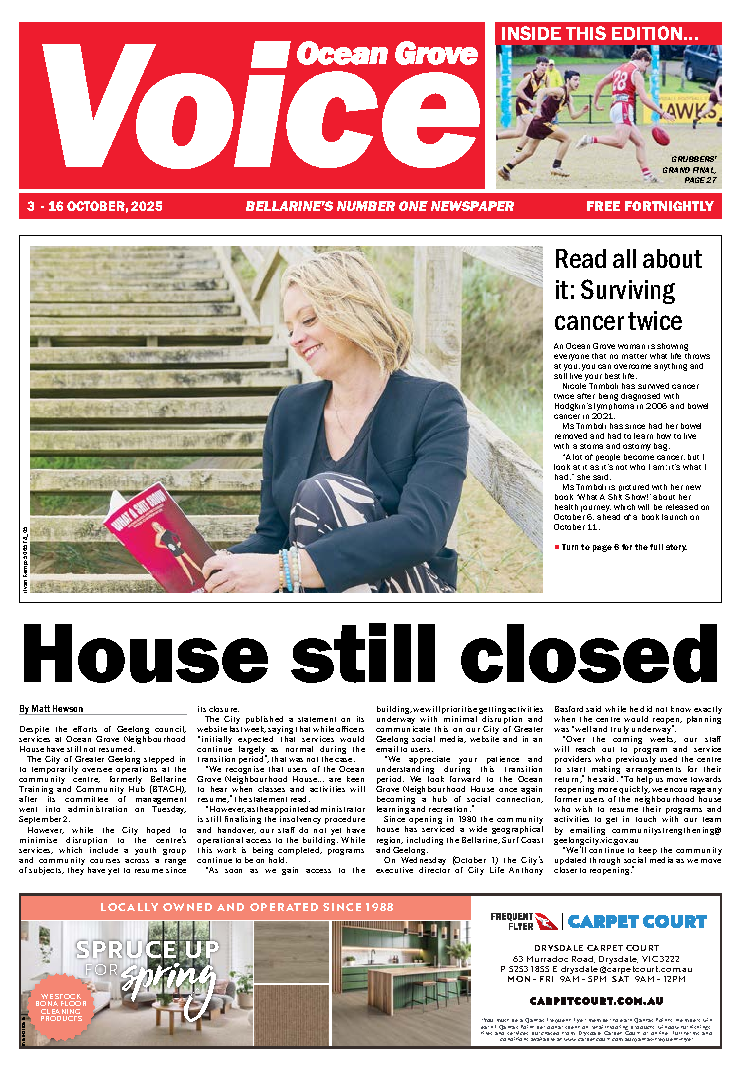Across Greater Geelong, community centres and neighbourhood houses provide essential resources to those in need.
From food banks to free educational classes, these centres excel at identifying the unique needs of their community members and providing hyper-local support that benefits everyone.
Nowhere is this more evident than in the cluster of community facilities in Whittington.
I recently had the pleasure of touring three of these hubs: the Bellarine Living & Learning Centre (Whittington Neighbourhood House), the Whittington Child and Family Centre, and Whittington Primary School.
These facilities offer a comprehensive suite of resources designed to help residents prosper.
The need for this support is clear. According to data from the Bureau of Statistics, Whittington is one of the most socio-economically disadvantaged areas in Greater Geelong.
The presence of these community centres is vital for helping people overcome disadvantage and thrive.
Whittington Neighbourhood House is a shining example of community advocacy in action.
This vibrant hub offers educational courses, social activities, and support services.
Its ‘learn local’ classes, including barista training, empower residents to gain skills and explore career opportunities in Geelong’s growing hospitality sector.
Social connection is also a key focus, with free classes in yoga, ceramics, and crafts, along with book clubs and social groups.
The centre also collaborates with key stakeholders to provide free community services like laundry, tax assistance, hearing tests, and digital technology support.
When I toured the centre, I was blown away by the scale of its Foodbank program, an initiative that has had a significant and lasting impact on the Whittington community.
In the last financial year, the Foodbank served an impressive 7240 meals to nearly 4000 participants.
The program ensures the most vulnerable people in our community have access to healthy and nutritious food, and nobody gets turned away.
By providing this safe and accessible space to access food relief, the centre is fostering a sense of dignity and connection within the community.
Following my visit to Whittington Neighbourhood House, I had the pleasure of touring Whittington Child and Family Centre and Whittington Primary School.
The kindergarten provides education and care programs for children aged 6 weeks to 5 years old. Its team also provide a range of other programs and services for children and families, including family support and parent education.
Whittington Primary School generously opened its doors to families for an open day, which the school hosts every term.
It was fantastic to see families coming together to celebrate their child’s education and to see the level of engagement and dedication demonstrated by the teaching staff.
Beyond traditional literacy and numeracy skills, the school is teaching its students valuable life skills in its kitchen garden program.
Students learn to grow fresh, seasonal produce and use it to prepare nutritious meals. The harvested vegetables go directly to the school’s free lunch program, where students can assemble their own lunches, encouraging autonomy, independence, and an appreciation for nutritious food.
What I witnessed in Whittington was a powerful demonstration of what a community can achieve when its institutions work together to meet the needs of its people.
By working together, Whittington’s community hubs are not just addressing disadvantage – they are building a stronger, more resilient community for everyone.









